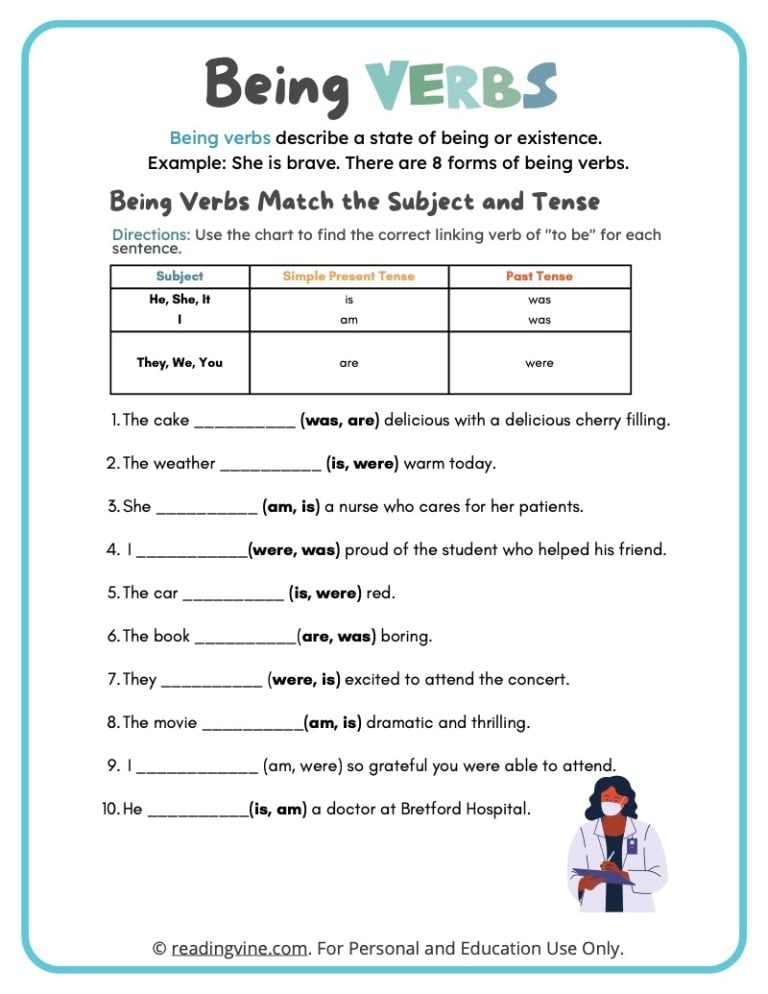Being verbs are essential in constructing sentences in the English language. They help to indicate a state of being or existence. Understanding the different being verbs can help improve your writing and communication skills. In this article, we will explore a list of common being verbs and how they are used in sentences.
Being verbs, also known as linking verbs, connect the subject of a sentence to a subject complement that describes or identifies the subject. They do not show action but rather a state of being. It is important to use being verbs correctly to convey the intended meaning in a sentence.
List of Being Verbs:
- am
- is
- are
- was
- were
- be
- being
- been
One common mistake that people make is using being verbs incorrectly or unnecessarily in their sentences. It is important to use being verbs only when they are needed to indicate a state of being. Overusing being verbs can make your writing less concise and clear.
Being verbs can also be used in progressive tenses to indicate ongoing actions or states. For example, “He is running” or “She was studying.” In these sentences, the being verbs “is” and “was” are used to show the continuous nature of the actions.
Remember that being verbs are essential in forming sentences but should be used judiciously to avoid redundancy or confusion. Practice using being verbs correctly in your writing to improve the clarity and effectiveness of your communication.
In conclusion, being verbs play a crucial role in the English language by connecting subjects to subject complements. By understanding and using being verbs correctly, you can enhance the quality of your writing and communication skills. Remember to use being verbs judiciously and accurately to convey your intended meaning in sentences.
